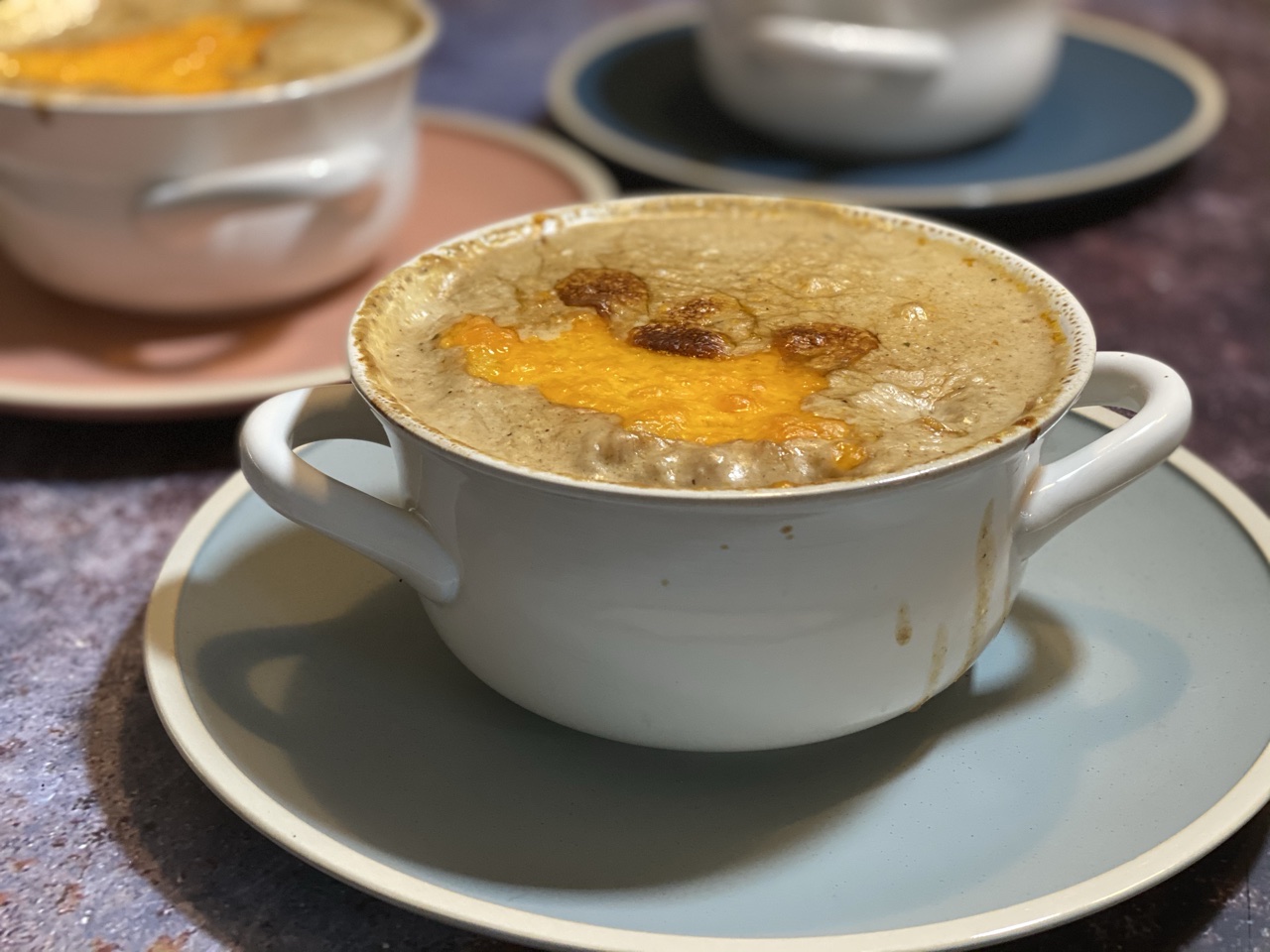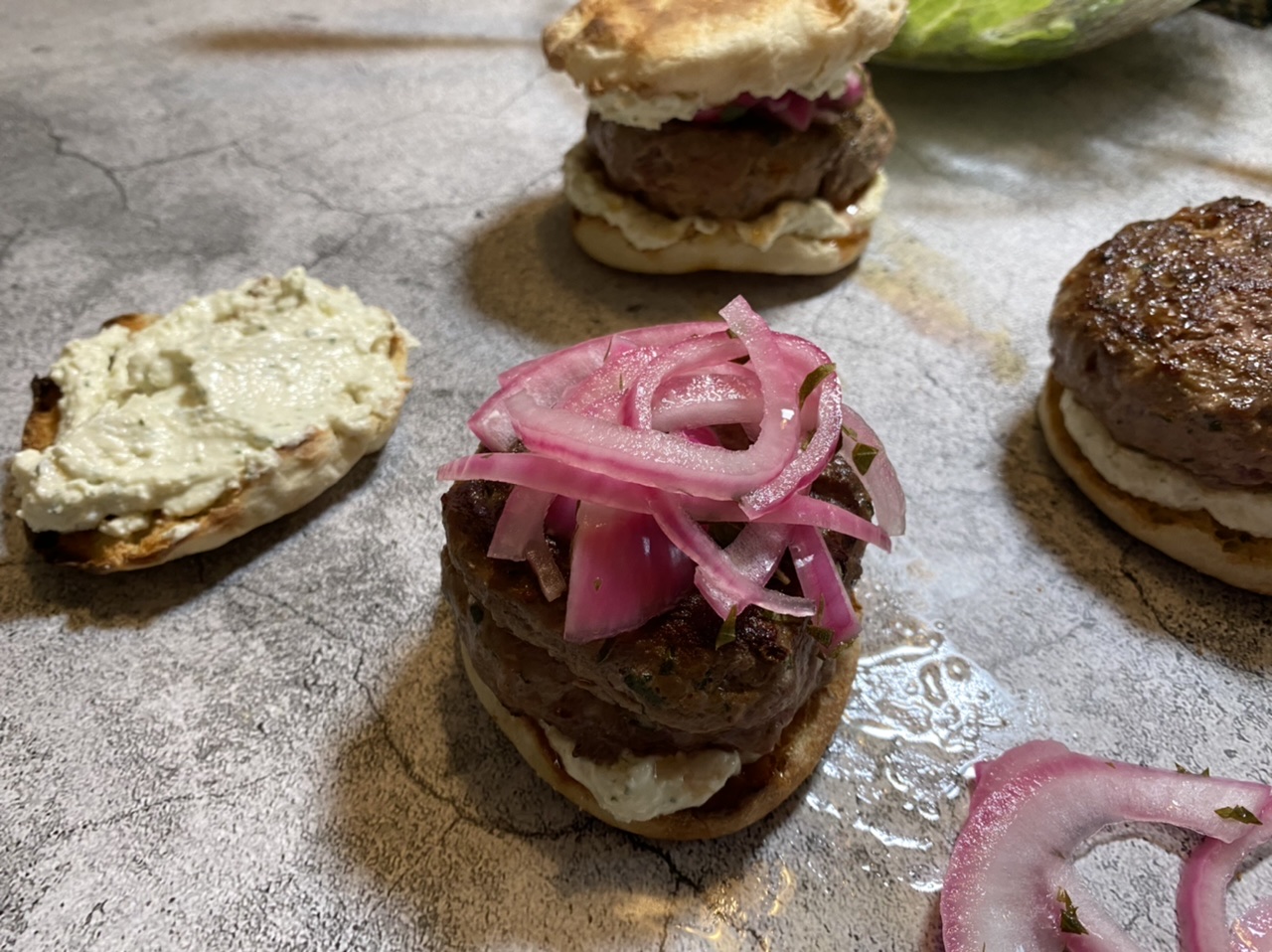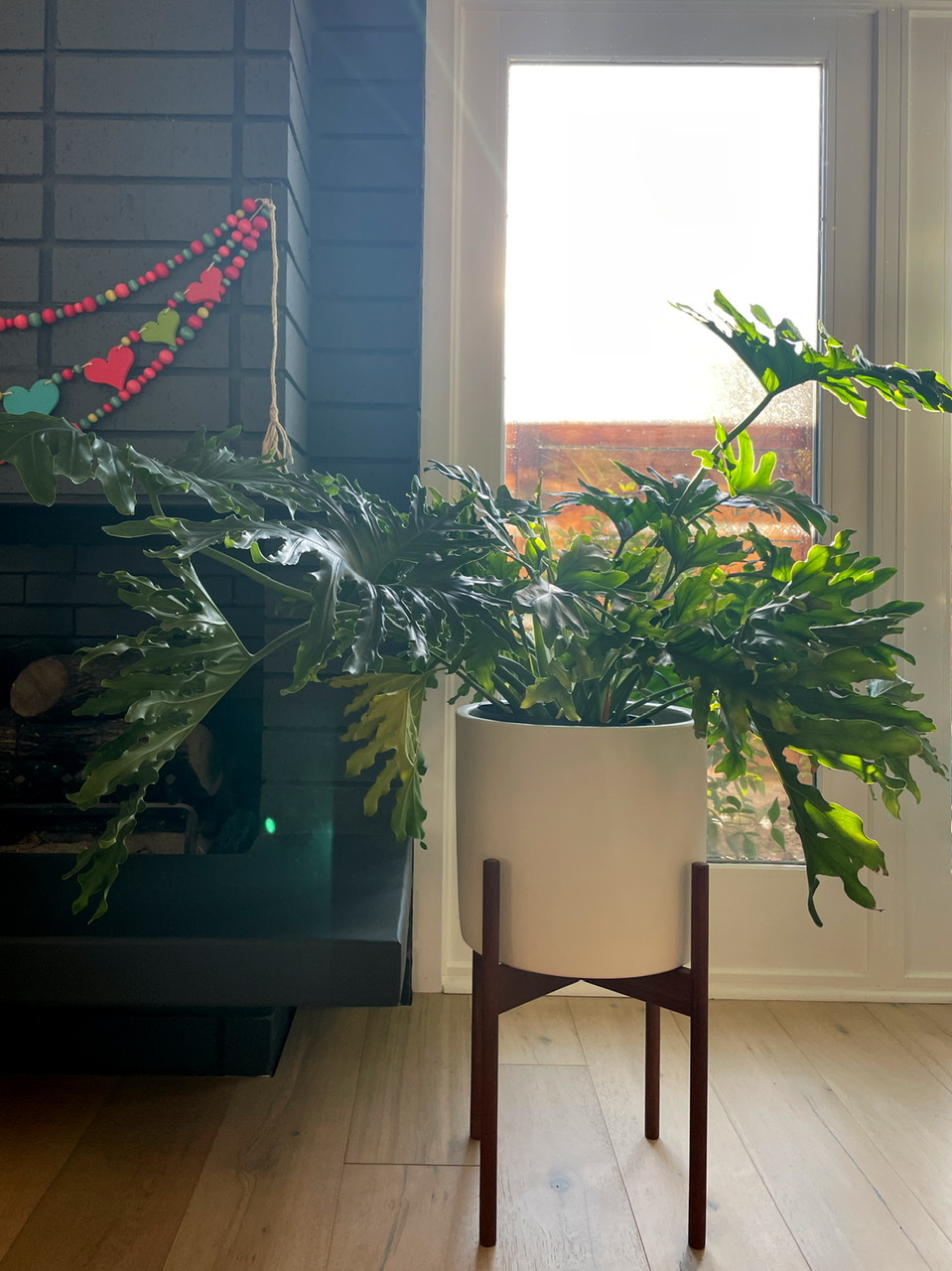
Although this blog has been focused on recipes for the past few months, I actually started this blog to also chronicle my travels (haha COVID!), my projects (they’re happening, I just need to write them up!), and gardening… terrariums, work in my outdoor shed, my vegetable garden, and indoor plants. So, after months of building up my recipe catalogue, I’ve asked my BFF to kick off a monthly post on indoor plants, as she has a ton of them (plants, not blog posts) and is well-versed in care, space, species, etc. (maybe I should have listed those backwards?). I hope to start bringing you all the variety of posts I had initially intended going forward, so stay tuned! In the meantime, the first post of Indoor Digs, by my BFF, Diana Douglas…
~~~~~~~~~~~~~~~~~~~~~~~
This is my third time guest-blogging for The Old Woman and the Sea, but instead of sharing desserts, I’ll be giving an inside look into my collection of houseplants! My houseplants are near and dear to me. They add welcome greenery to our home, but with the amount of time and love we spend keeping them healthy, and the joy they bring (and annoyances too, sometimes), they really feel like they’re part of the family. We’ve even named many of them! I have about twenty-five different plants, and I look forward to introducing some of them to you in the coming months here at The Old Woman and the Sea.
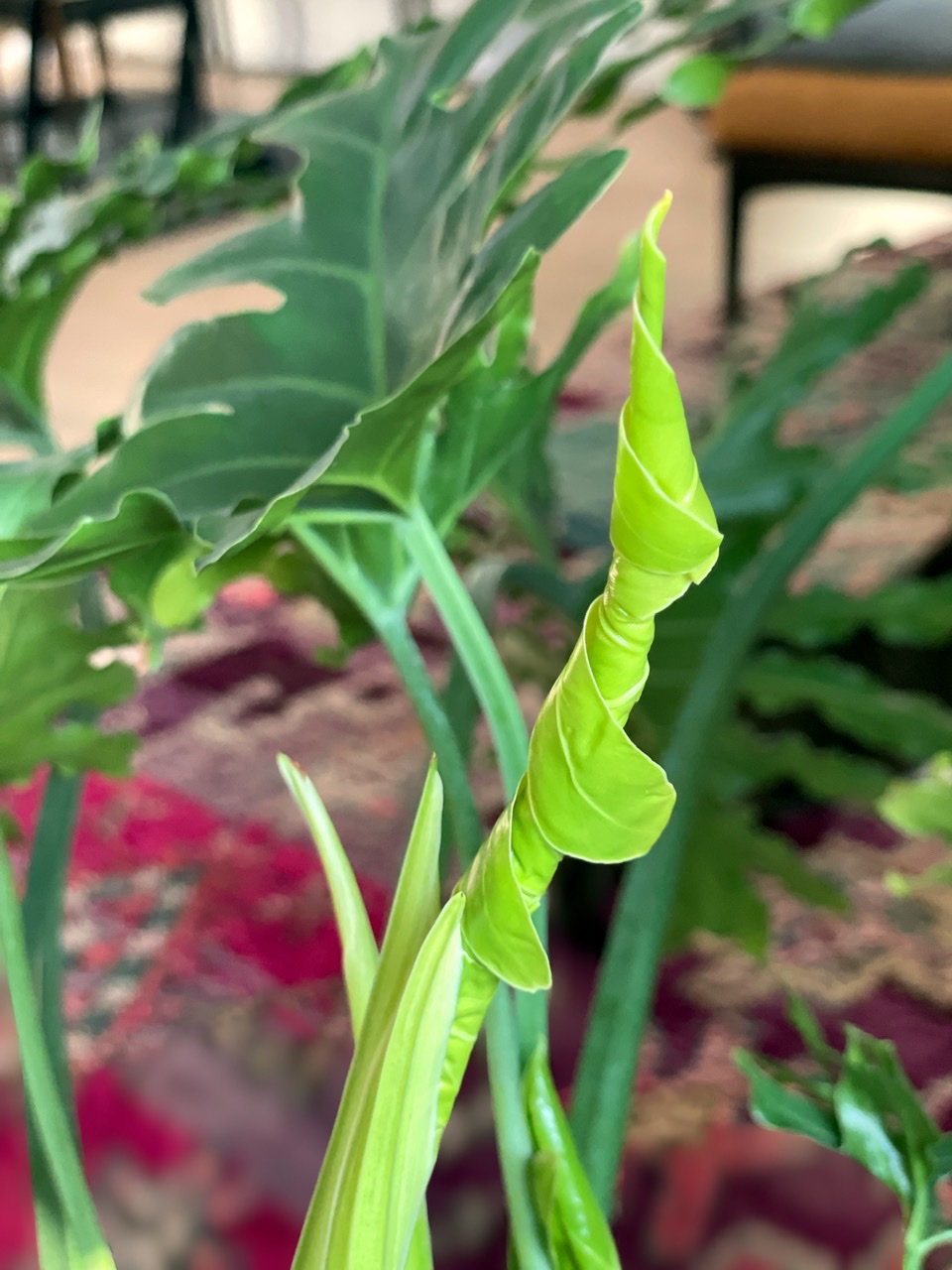
We know it’s a terrible idea to pick favorites among family, but if I HAD to choose a favorite indoor plant, it might just be my Thaumatophyllum bipinnatifidum, commonly known as a “split leaf philodendron” or “hope philodendron.” She’s our largest plant, and our daughter affectionately named her “Monster Leaf” when she first saw her, since at the time she had one massive leaf that stood out from all the rest.
Two years ago, when we were house-hunting, we were stopped in our tracks when we first stepped foot in our (future) home. It has a fun midcentury vibe and features 15-foot floor-to-ceiling windows that frame both sides of the main living space. I knew right away it was going to be our home, and that I wanted to fill it up with giant plants!
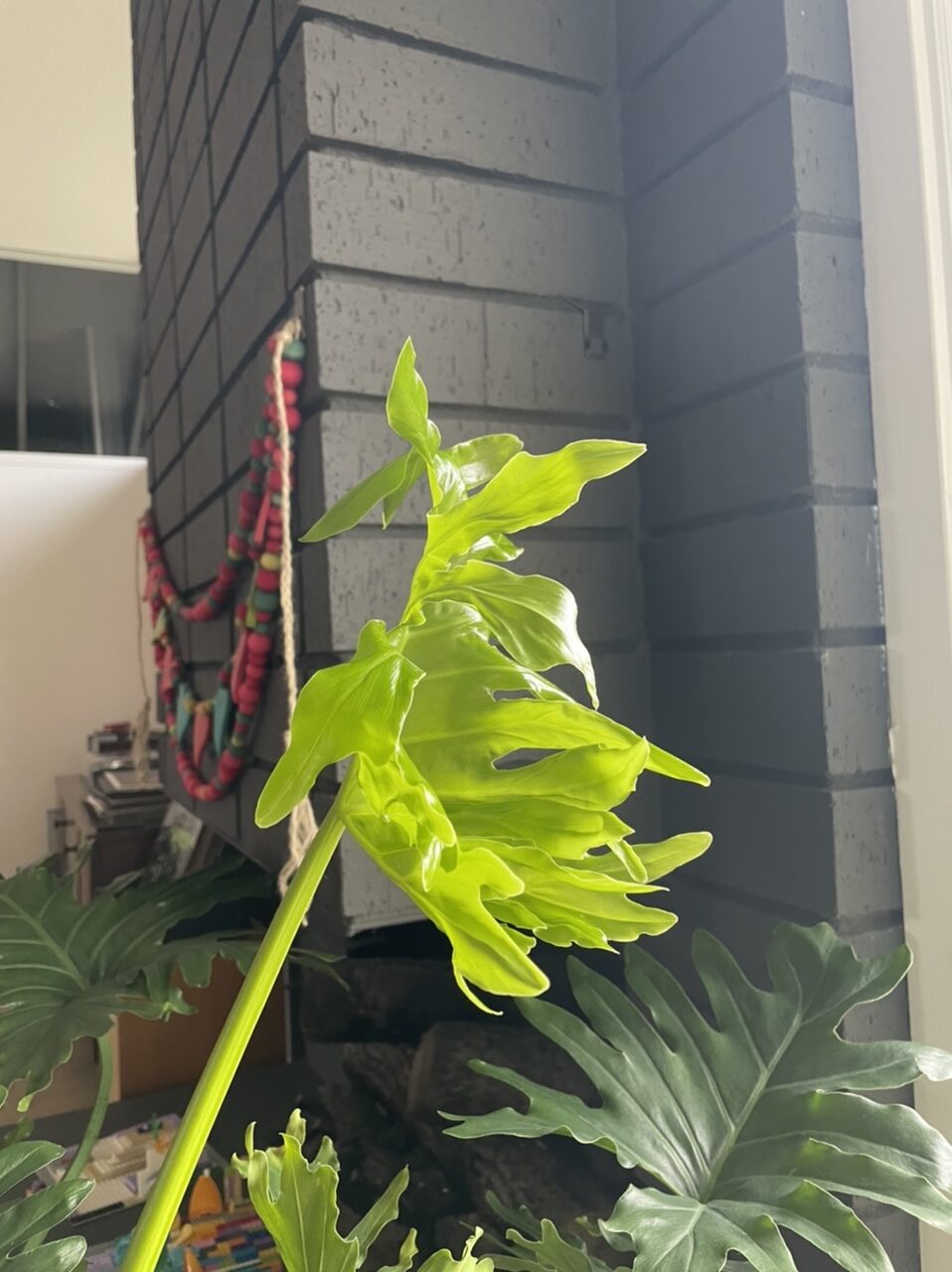
For our first large-scale plant, I considered the two trendy standbys—fiddle leaf fig, and monstera deliciosa. Fiddle leaf figs are known to be finicky, though, and besides, I really wanted something lower to the ground and with a more tropical feel. Monsteras are stunning, but also can be extremely pricey! Enter split leaf philodendrons. They have much of the same look and growth requirements as monsteras, so much so that the two are frequently confused. You will even see monsteras incorrectly labelled as philodendrons (and to make things even more confusing, split leaf philodendrons aren’t even really philodendrons… see footnote if you want to geek out on plant taxonomy). Split leaf philodendrons can be distinguished with their finger-like leaves, and the fact that they don’t have the fenestration (i.e., “swiss cheese holes”) that the monsteras have. They also are slightly more tolerant of different light conditions, and easier to find at local shops. The variety I have is a hope philodendron, which is a slightly smaller hybrid of the larger Philodendron selloum species.
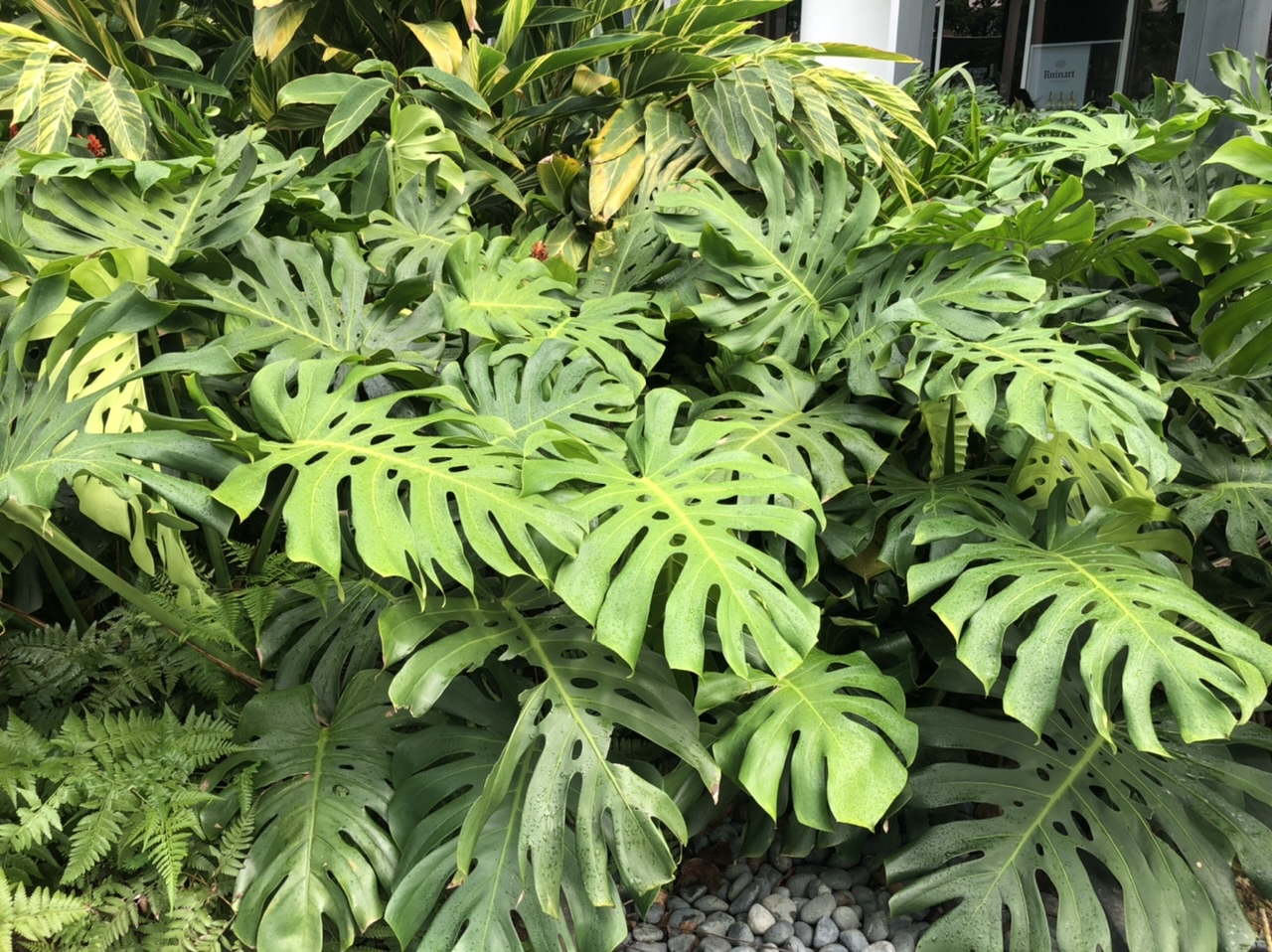
The reward-to-effort ratio on this plant is remarkable. She’s in our family room in a spot that gets 4-5 hours of bright, indirect light in the afternoons and maybe an hour of direct light. She gets watered every one to two weeks (more on that later), and has never been repotted. I might have stuck a Miracle Gro spike in there a while ago, but who knows? Super basic. And yet for two years now, she has abundantly unfurled the most stunning new leaf spikes, grown many more massive “monster leaves” and just been all around healthy and beautiful. I wish I could claim some special green thumb skills, but these plants seem to take care of themselves.
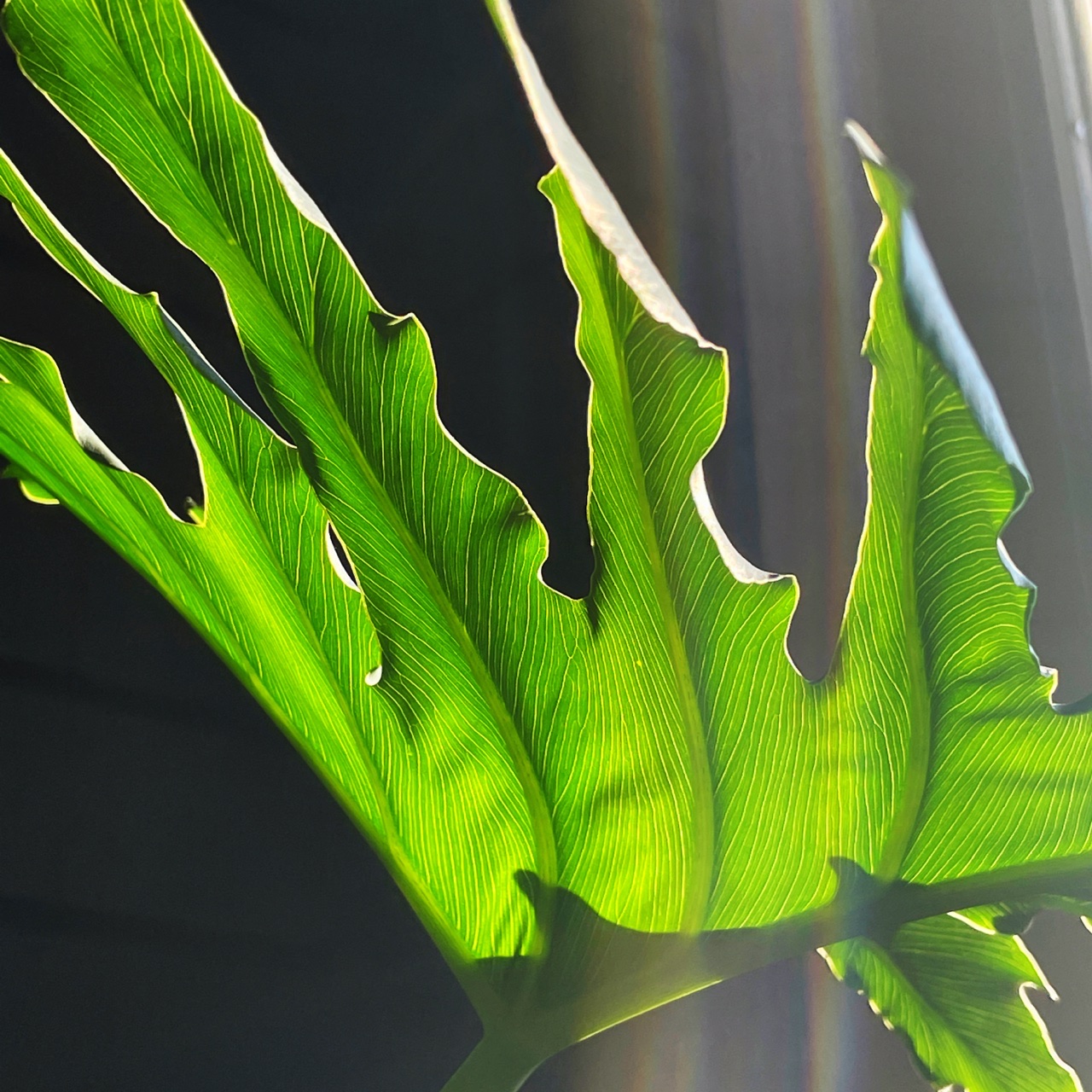
A note on different levels of plant care difficulty—I always hear it framed in terms of “low vs high maintenance.” But I prefer to think of it in “low vs high finicky-ness.” Low maintenance plants often get really provoked if god forbid you do anything to them. Too much water, moving them around, repotting—fussing too much over them often results in unhappy (or dead) plants. So, for people with “brown thumbs” or if you just want a plant that’s easy, I say aim for low finnicky-ness. Go for plants, like this one, that are adaptable and won’t up and lose all their leaves because you move the pot six inches to the left, or start to rot because you watered them a bit too much. Hope leaf philodendrons—super easy, adaptable, and at least give some warning signs if things start to go sideways!
There is ONE fun thing that I do to pamper her. We all like a day at the spa, right? So do split leaf philodendrons. Every two weeks, much to my daughter’s annoyance, Monster Leaf gets to take over her shower! I carry her from her spot in the family room, through the dining room (which she spans almost the entire width of), and into the shower. Turn the water on lukewarm, and give her a nice soak for about five minutes.
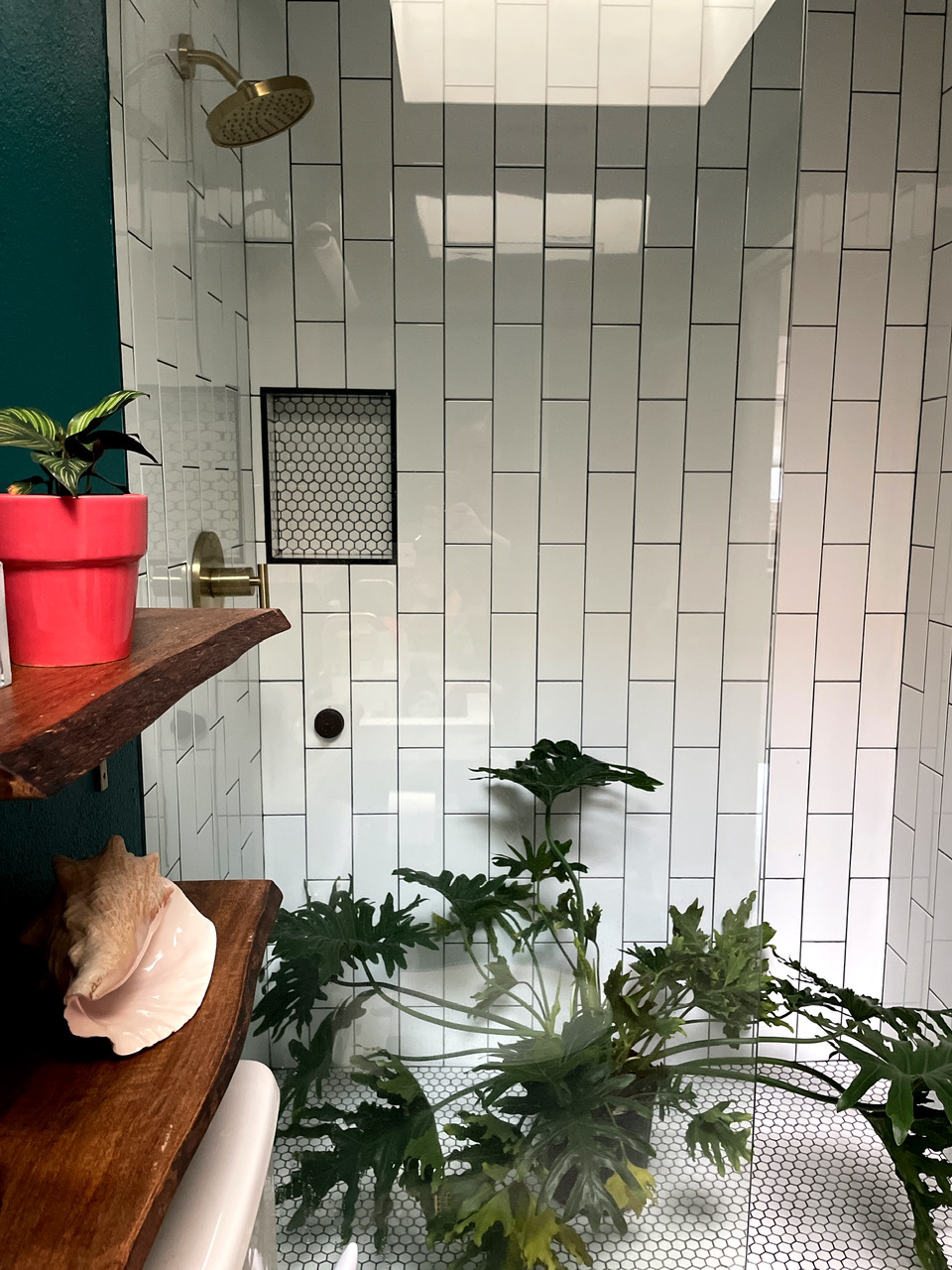
It sounds silly, but it really is helpful for a few reasons. First, when you have leaves that are over two feet long, they tend to gather dust! If you’re going to have a show topper plant that takes up half the room, you really want to keep the leaves green. Second, it gives it a thorough drink, all the way through the roots, way better than what I could accomplish with a watering can. And, it rinses all the salts and mineral deposits out of the dirt. Some plants are sensitive to minerals, so the shower gives a good long flush.
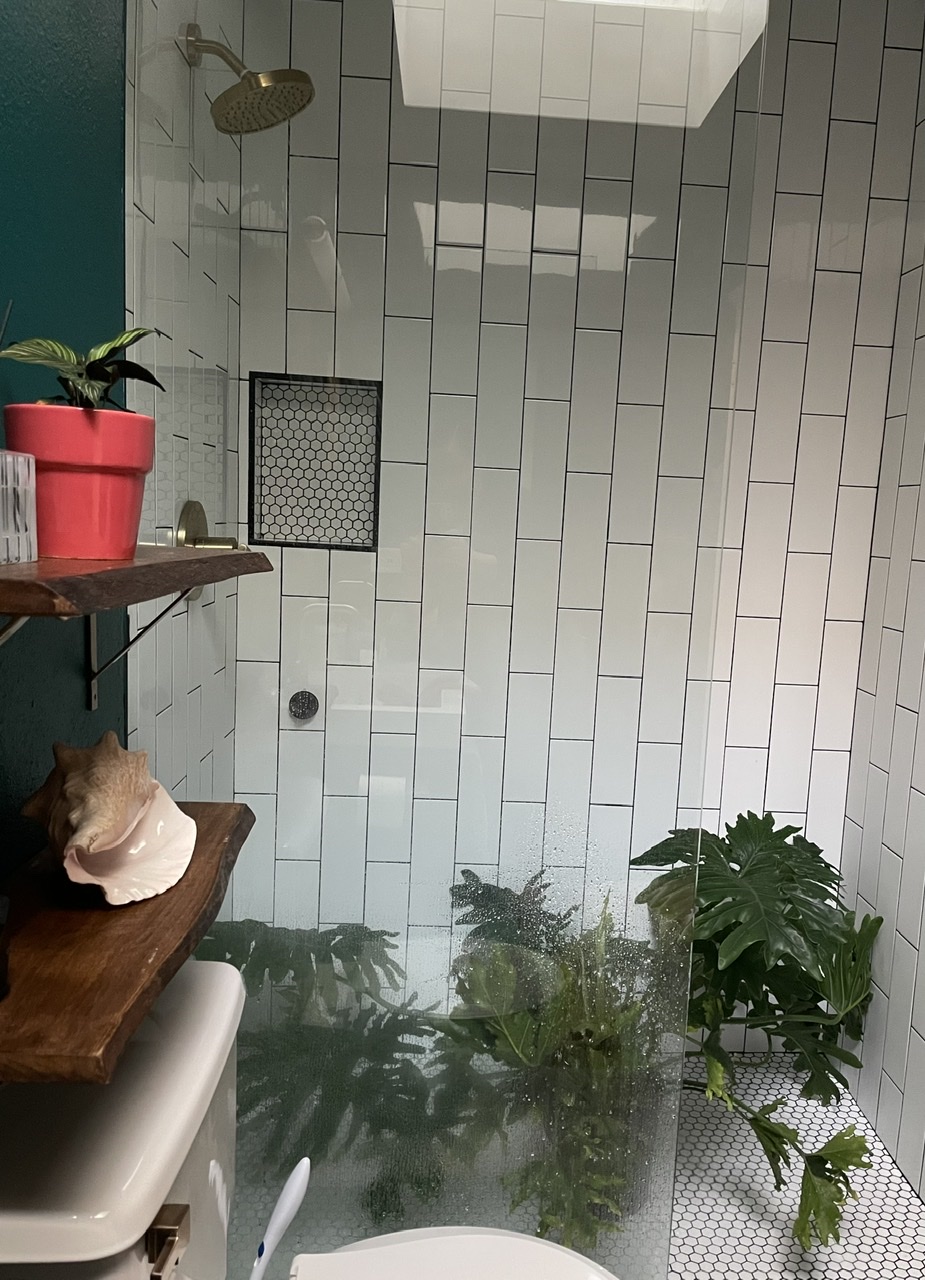
Other than the twice-monthly showers, I sometimes give her a drink with the watering can if I’m watering the other plants, but only if the dirt seems dry. Other maintenance includes snipping off any dead or yellowing leaves, which only occurs occasionally. Mostly, we just sit back, enjoy her grandeur, and marvel at the break-neck pace with which she grows new leaves!
My only worry with this plant is—what exactly is our end game here? At nearly SIX FEET wide, as much as it saddens me, eventually the shower days will come to an end because she won’t fit through the bathroom door. I suppose then I could take her outside and hose her off, but it just doesn’t seem as luxurious. I’ve noticed some houses here in our Sacramento neighborhood actually have hope philodendrons planted outside, so that’s an option. But we would definitely miss enjoying her greenery indoors (and worry about her on frosty nights!).
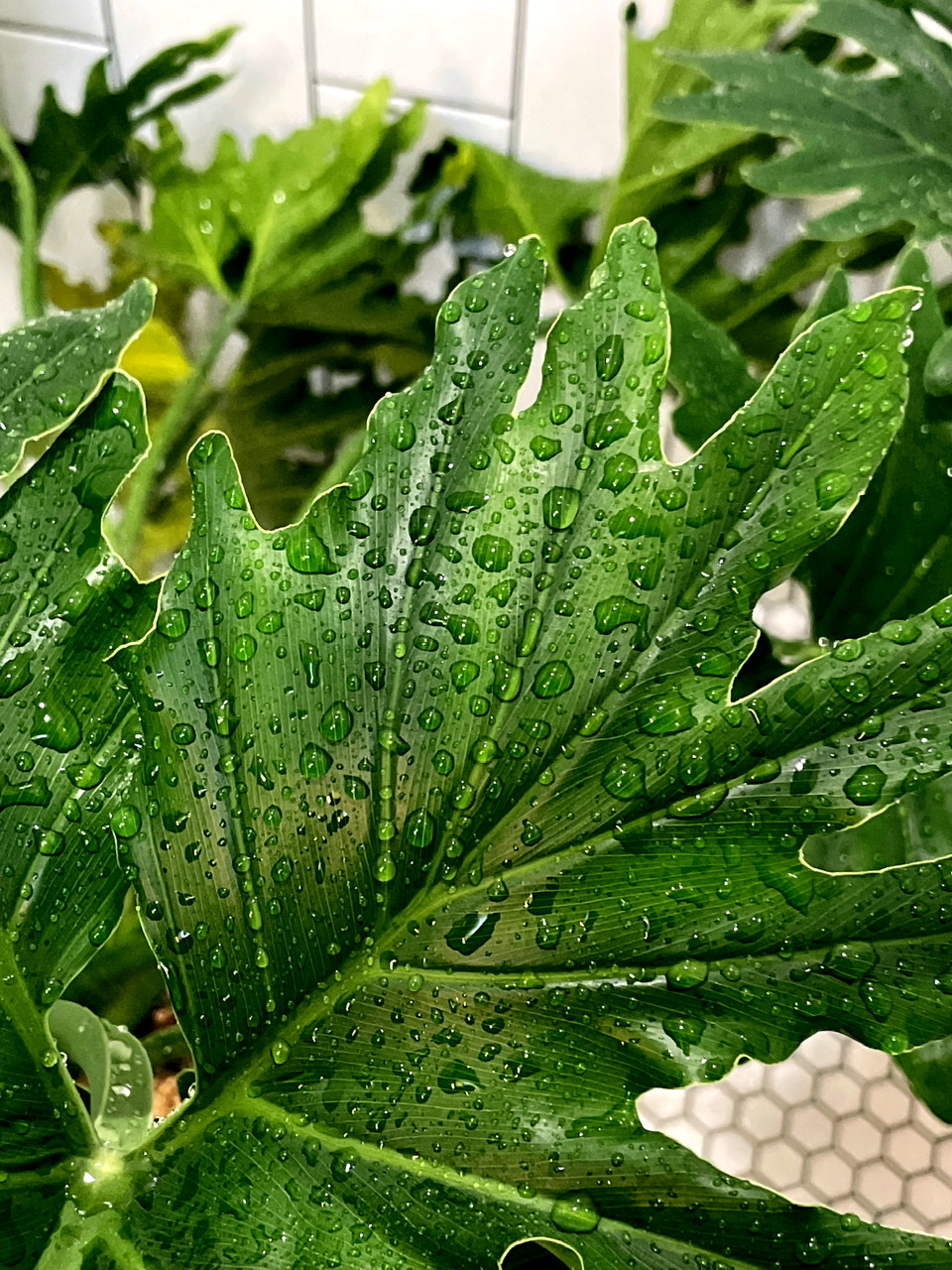
[note on plant names: When I first got this plant and was researching care, I was confused by all the different names! It was labelled as a hope philodendron, but you also see them referred to as split leaf philodendrons, and some say they’re not philodendrons at all. It turns out, the hope philodendrons are a smaller hybrid of the more general philodendron selloum species. And after educating myself more, I found the interesting backstory that split leaf philodendrons were recently reclassified from philodendron bipinnatifidum to thaumatophyllum bipinnatifidum, and so are no longer considered philodendrons at all! Just a few years ago, DNA evidence revealed that these plants are distinct from others in the philodendron genus. A new genus, thaumatophyllum, was created. I have read that thaumatophyllum bipinnatifidum means “miraculous leaf” which is truly a perfect name for this plant! If you want to geek out even more, this article is a fun read: https://www.quantamagazine.org/dna-analysis-reveals-a-genus-of-plants-hiding-in-plain-sight-20180904/ ]
